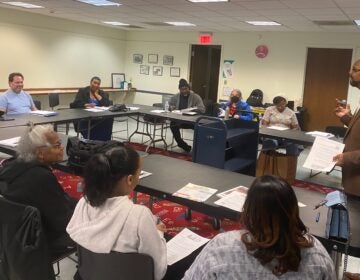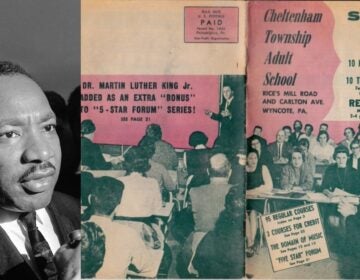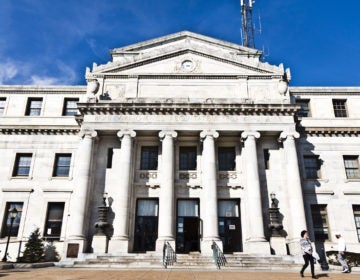A cherished mural falls victim to Philadelphia redevelopment
A mural commemorating children lost to violence was 'memory lane' for the community. Now, the developer promises to replace the neighborhood memorial.
Listen 4:26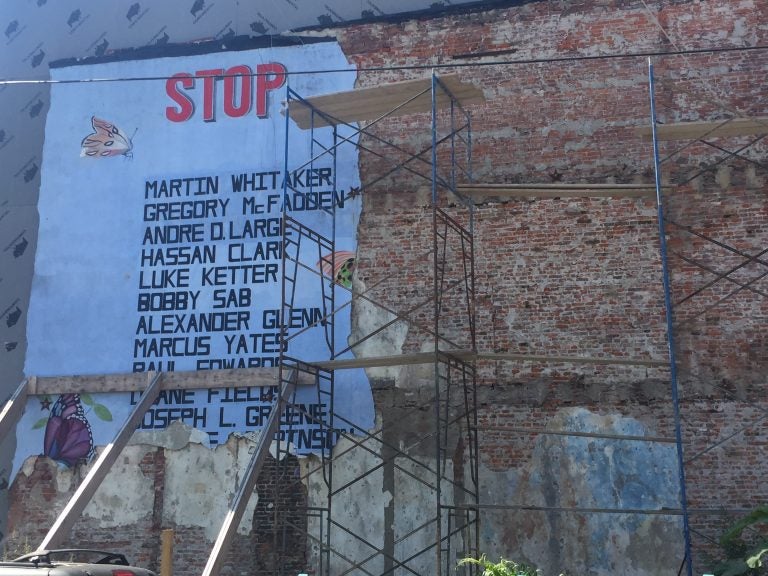
Developer Steven Brown, who said his intention had always been to preserve the mural, said the building was on the verge of collapse and impossible to save. He has promised to replace it. (Annette John-Hall/WHYY)
Driving by 20th and Fernon streets, Darryl Roberts thought the mural looked like something was missing. But he didn’t pay much attention. It was early evening, and he figured the sun had shaded parts of the wall.
But a couple of days later, Roberts drove by again, and what he saw alarmed him.
The mural, the one that had been in his South Philly neighborhood ever since he could remember, the one that paid tribute to his slain cousin Marcus Yates, was actually coming down.
“I didn’t know if it was falling down or being taken down,” Roberts said. “I didn’t know until we found out what was really going on.”
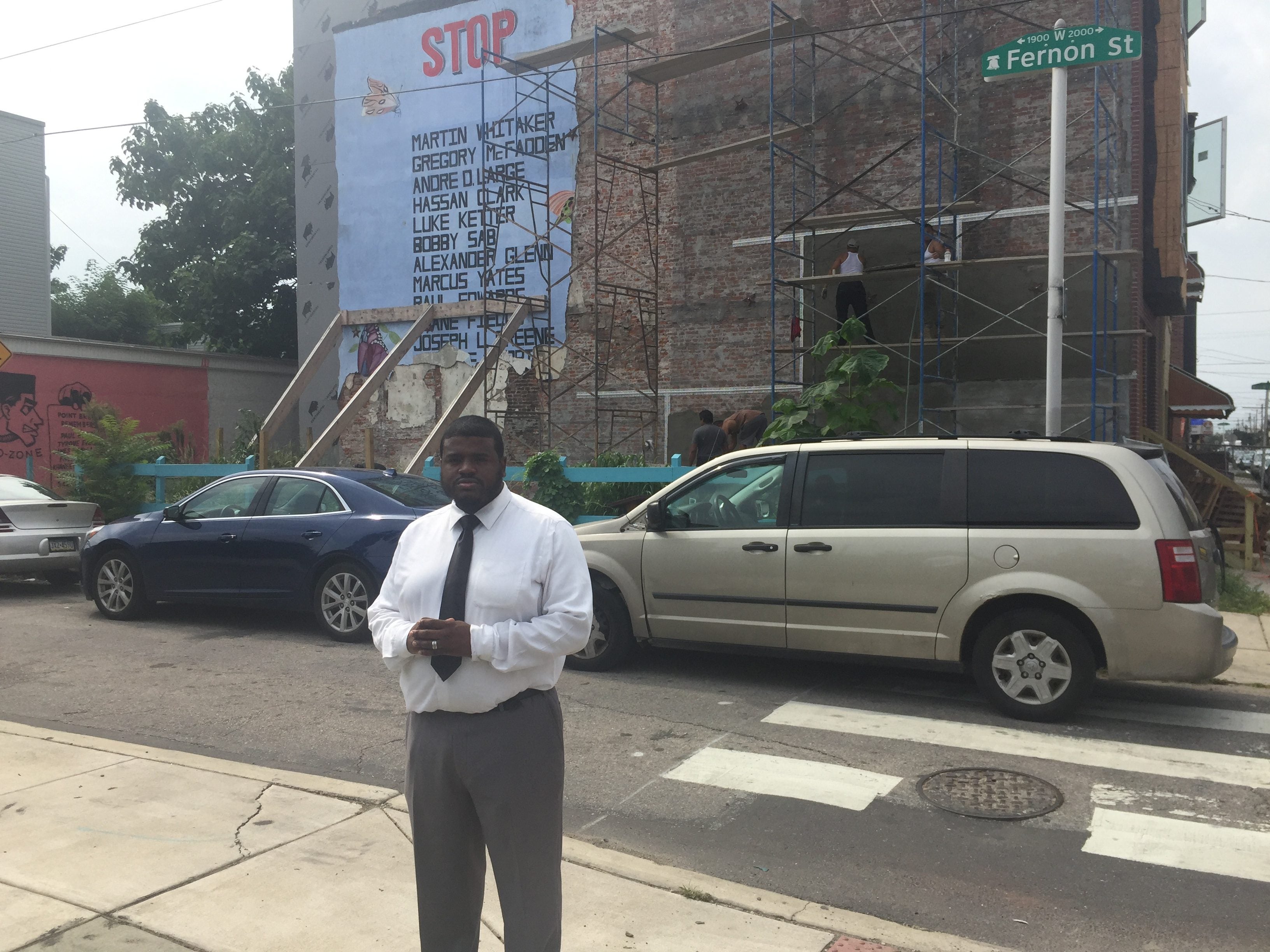
As it turns out, it appears to be a textbook case of lack of communication between a developer and the community. And it tells a cautionary tale about how rapid development can improve neighborhoods — but also dishonor them at the same time.
Steven Brown, managing partner for the Urban Living Group, is one of dozens of developers who have saturated Point Breeze, one of the most gentrified areas in Philadelphia. From 2000 to 2016, according to the U.S. Census, the median housing price in some areas soared from $29,000 to $234,000. During that same time, the neighborhood went from 80 percent black to 46 percent black.
Now, weekend ballers who grew up in Point Breeze easily co-exist with recently arrived white residents walking their dogs; the new yoga studio competes with the old corner bar; and modest row houses share the block with $500,000 townhouses.
‘I didn’t want anybody to get hurt’
The mural, known as “Stop the Violence,” was painted in 1989 by Jane Golden — now executive director of the city’s Mural Arts program — and a group of neighborhood kids, back when Mural Arts was known as the Anti-Graffiti Network. Emblazoned with the names of more than 30 neighborhood children killed in gunfire, it graced the wall of Brown’s building. Brown purchased the five-bedroom single-family residence in November and planned to sell it for $479,000 after rehabbing it.
Brown, who said his intention had always been to preserve the mural, said the building was on the verge of collapse and impossible to save.
“The wall that the mural was on had a cement barrier connected to brick, and the brick and the cement barrier were pulling apart, causing fragments of the wall to fall,” he said. “I was concerned … I didn’t want anybody to get hurt.”
Brown also said he planned to replace the mural — but no one in the neighborhood knew anything about that plan.
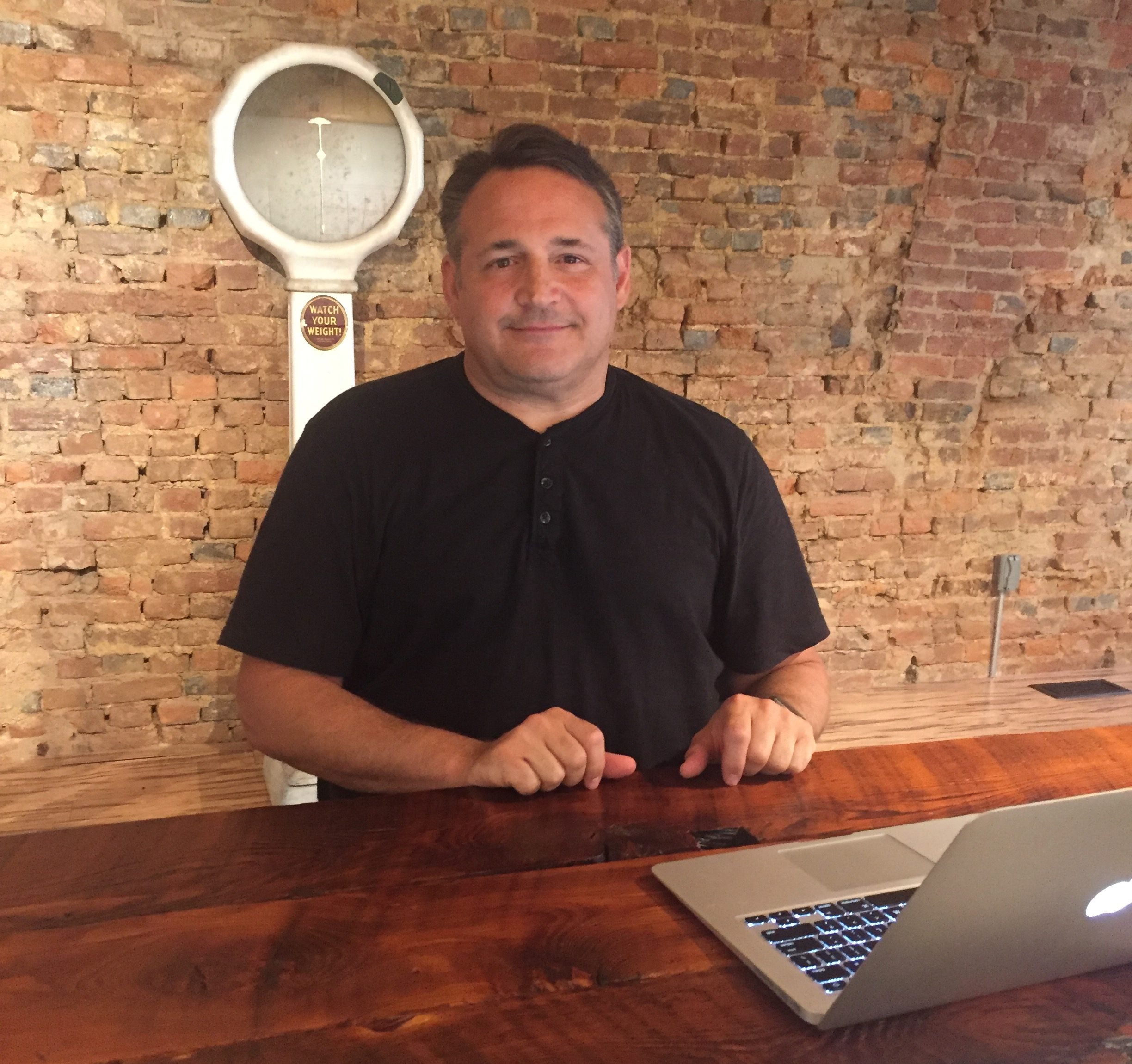
The result? Community outrage. Neighbors complained to City Councilman Kenyatta Johnson. Then they held a heated community meeting where they let Brown know in no uncertain terms how they felt.
“The misstep was that he didn’t engage the community on what his plans were going to be for the future. That’s where the hiccup happened,” Johnson said.
“I took a lot of criticism at the meeting,” Brown said. “People were very upset because their family members and kids whose lives were lost were taken from them. I totally respect what the mural represented. We did everything we could to try to preserve it.”
5-year-old killed in the crossfire
Still, the misunderstanding has made Roberts leery of the changes he sees all around his neighborhood.
“It makes me question new development that is coming into the community,” he said. “They look nice, but when you start coming for our murals, our memory lanes, it’s distressing. And being a relative of one of the names on the wall makes it hurt even more.”
Marcus Yates, Roberts’ cousin, was only 5 years old when he was caught in the crossfire of a gunfight between rival drug dealers in a deli at 60th and Springfield in 1988. Several of Roberts’ family members were hit, including Marcus’ brother; Marcus was the only one killed.
The family recently commemorated the 30th anniversary of Marcus’ death with a street renaming and balloon release at the site of the shooting. Roberts said it’s comforting to know that his cousin’s short life is well-remembered — “Lost Dreams on Canvas,” a portrait exhibition of children whose lives were lost to gun violence was conceived because of the child’s murder.
Roberts said the replacement mural should be honored with the same reverence as his family had for Marcus’ commemoration.
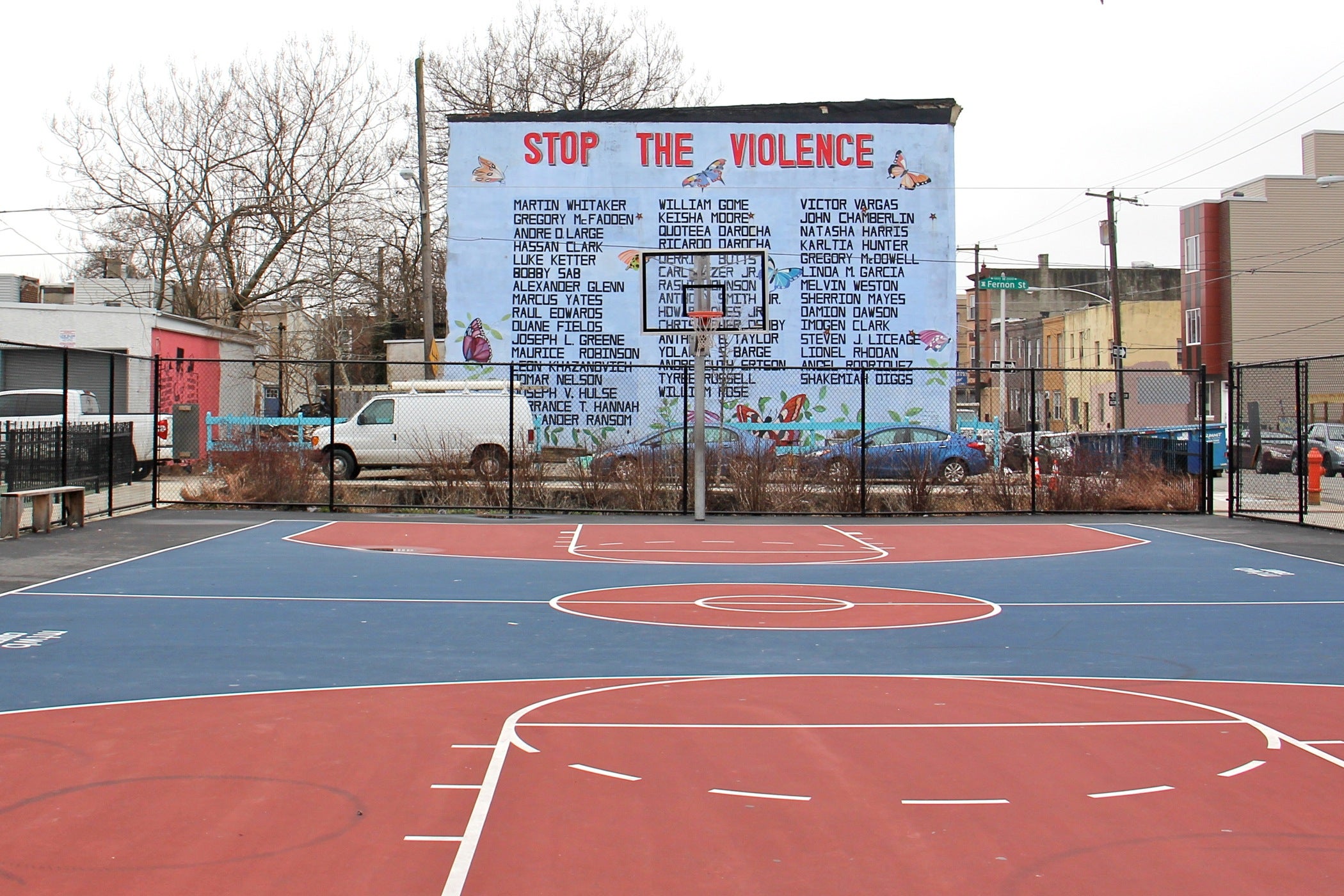
“Invite the families and do an unveiling or a rededication or something like that,” he said. “And have the developer come, so he can see this is not just a wall with name, but it’s families impacted by the violence that took the lives of these names.”
Community leaders, after meeting this week, announced the replacement mural will feature the same names, along with some artistic embellishments. It is expected to go up sometime this fall.
WHYY is your source for fact-based, in-depth journalism and information. As a nonprofit organization, we rely on financial support from readers like you. Please give today.


